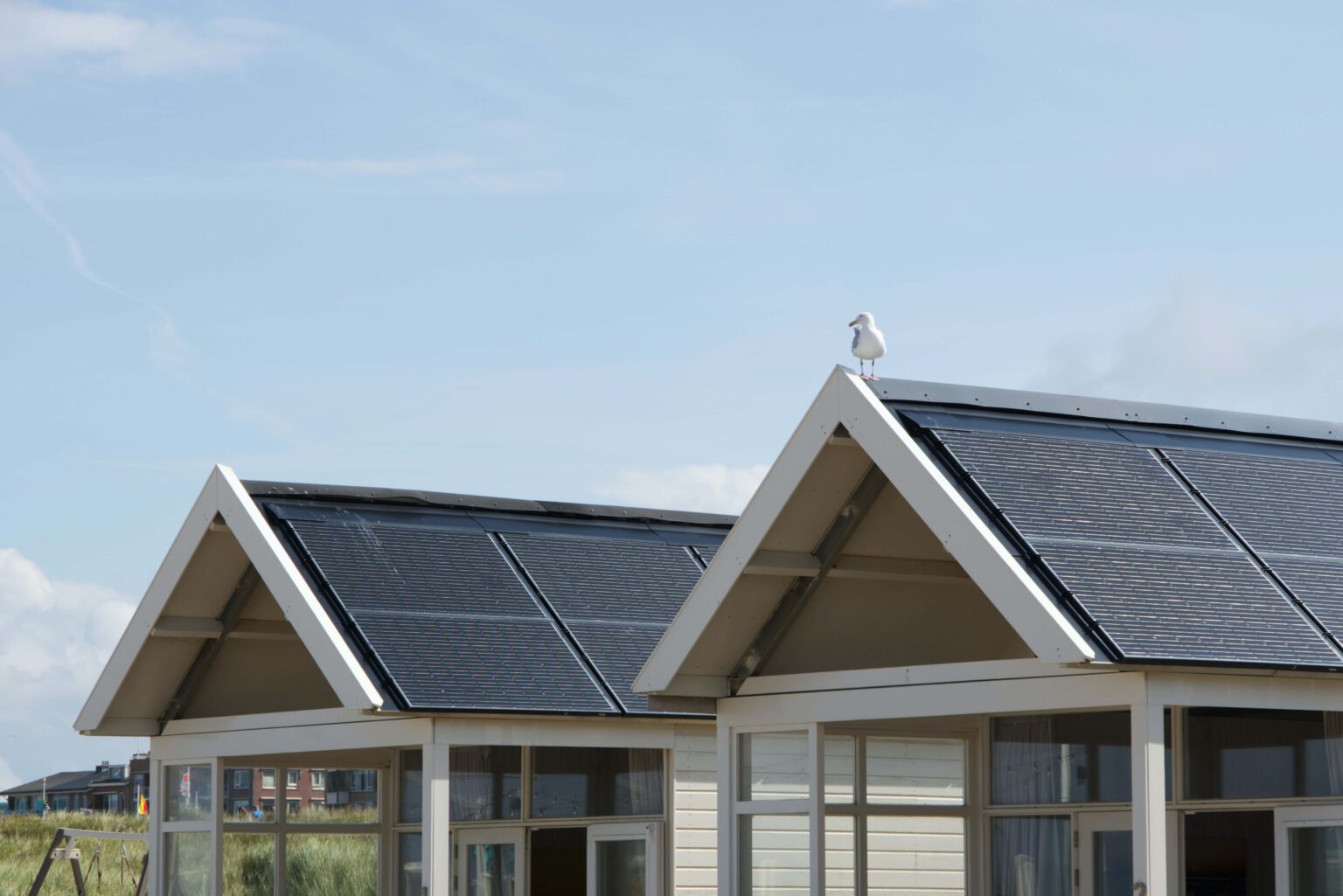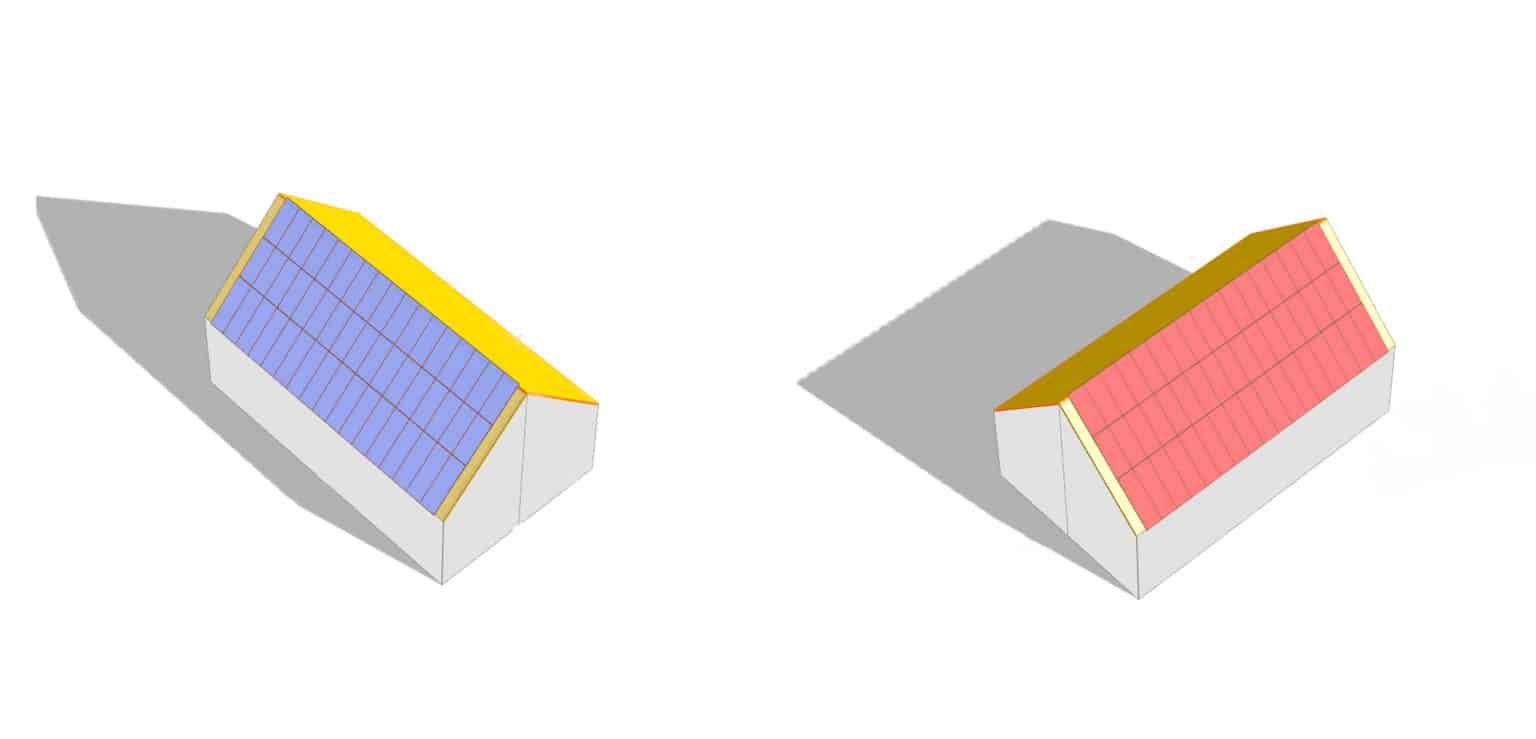
As solar panels depend on sunlight, placing them in the right direction and angle can make a big difference in terms of generating a good amount of free electricity. Therefore, choosing the right orientation of a solar energy system is as important as the type of panels you choose for your solar installation. In this article, we discuss the main factors you need to know when deciding the best direction for your solar panels.

The orientation of solar panels
The best direction for solar panels is determined by the location. Those living in the Northern Hemisphere need to position their solar panels south, whereas solar installations in the Southern Hemisphere should be installed north. This is because of the sun’s southern offset in the Northern Hemisphere and a northern offset in the southern one.
As an example, let us take a roof in the Northern Hemisphere. While the south side will get the most of the sun, the north side of the building will be mostly in shade. During the morning hours, the west is shaded, and the east gets the sun. In the evening, we get a vice versa scenario: the east is shaded and the west is under the sun. Therefore, for a solar system in the Northern Hemisphere, the best orientation is the south. But, if you have limited space on your roof and can’t put your solar panels in the greatest location, it’s preferable to put them as close to the south as possible.
If you position solar panels only east or west, they will anyway generate a good amount of energy but only during the mornings or evenings. In total, they will generate around 20% less energy than for example, a south-facing roof. However, adding up a few additional panels to the east and west will give you a good amount of free electricity from early morning right through to late evening.
According to some solar experts, if you live in an area that charges a higher rate in the late afternoon or early evening hours, it is reasonable to face your panels southwest. The benefit here is that while the sun is setting, you’ll be producing your own solar energy and avoid the need to pull that energy from the grid during the peak hours when the utility rate is higher.
As for residential solar power systems in the Southern Hemisphere, because the sun’s direction moves north, north-facing panels will give you the maximum solar output throughout the day. Keep in mind, however, that you should position your solar energy system using longitude lines on a map rather than compass directions.

The angle of solar panels
Ensuring the right orientation during the installation of your rooftop solar is crucial, but the angle also plays a large part in order to get the maximum out of your residential solar. Choosing the most optimal angle ensures that the panels will receive enough light throughout the day.
The geographical latitude determines the angle at which your residential solar system should be installed to produce the most energy. In other words, if you’re at 30 degrees latitude, you should set your solar system at a 30-degree angle. Most roofs usually have slopes between 30 and 50 degrees, which are already suitable for a number of rooftop solar solutions in the market.
If your roof is flat and you put solar panels there, you will get around 15% less energy overall out of them compared to tilted rooftop installations. In this scenario, you will get more in the summer months and less in the winter months and you will run into problems when it rains, because there needs to be some tilt for the rainwater to run off the panels. Otherwise, the rain won’t clean them, which means more maintenance work for you.
During the winter months, an angle also makes it easier for snow to slide down the solar panels. Moreover, snow accumulation on low-tilt panels can diminish or totally prevent the sun’s rays from reaching the solar panel. To maximize your energy production throughout the year, you need at least a 10-degree tilt of your residential solar system. Additionally, low-tilt solar roofs are more prone to accumulating dirt and debris, which can partially obstruct sunlight.


Conclusion
For the installations in the Southern Hemisphere, the best orientation of residential solar would be north, and for Northern Hemisphere installations the best direction for solar panels to face is south.
Solar panels facing different directions can benefit such solar projects that aren’t connected to the grid or don’t plan to invest in batteries. This will help them to get the most out of the residential solar system throughout the day avoiding any potential energy generation gaps.
The angle or tilt of solar panels also needs to be taken into account when installing your rooftop solar. It is advised that the angle of your solar panels should match your latitude. However, the best angle for your residential solar is simply the one that your roof is already at, because the difference in energy will only be a few percent less compared to mocking around with extra tilt frames, which will make your roof unattractive.